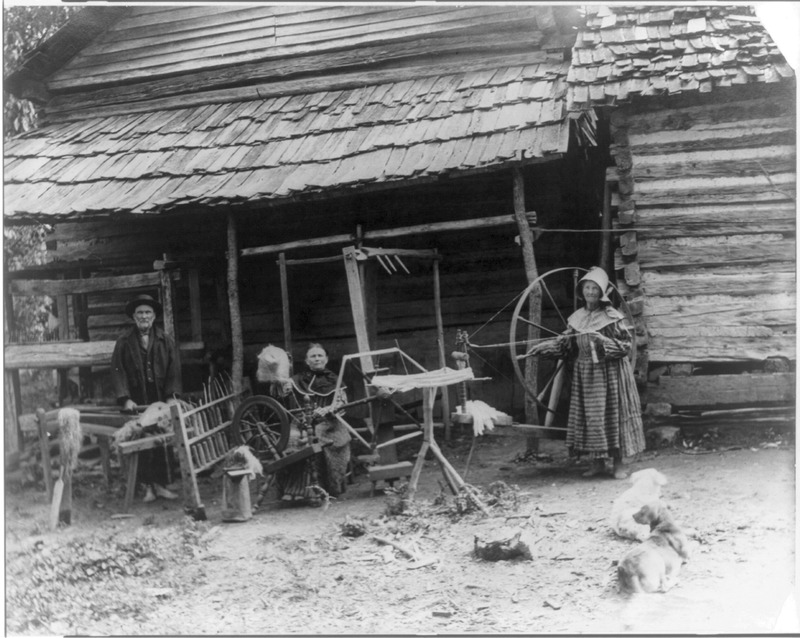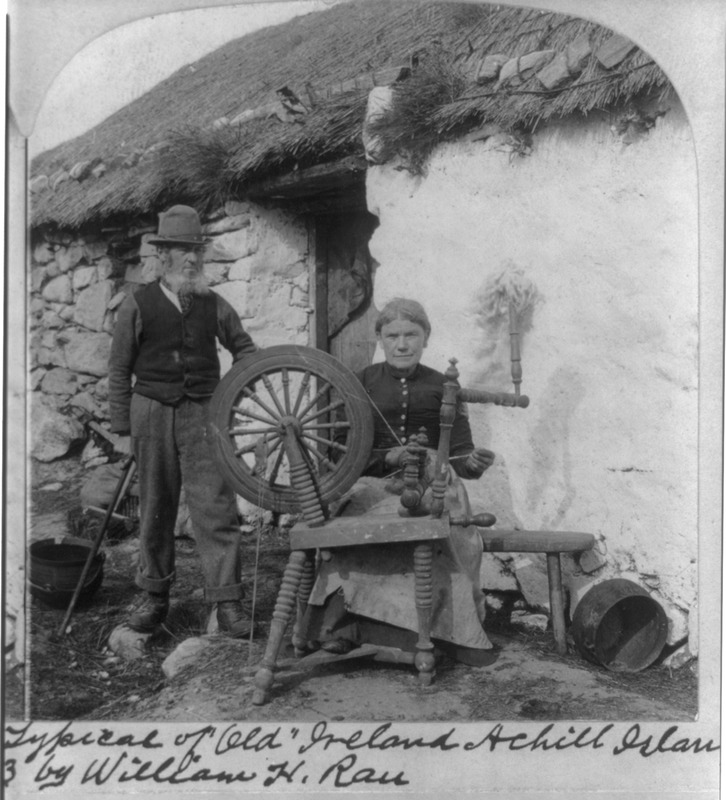The Spinning Wheel as Symbol of Home
This photograph shows a traditional Irish family seated outside their rural house. This half of a stereoscopic image links the spinning wheel with a traditional way of life, a life manifested in their tools, appearance, and home. Situated outside the door of the house and among them, it seems to symbolize their life, something that exists among them, a lived object. As we can see, this relationship between the home, existence, and the spinning wheel is relatively the same in both this scene and in the photographs below. The spinning wheel is a universal symbol for a particular home. This paradox is discussed in detail in the paper, and how it contributed to a national identity when immigration is paid attention to in the United States. The power of its domestic image gives it an ideological status.

Unknown, The Faust family, Anderson County, Tenn. at Spinning Wheel in Front of Cabin, c1910

Unknown, Anderson County, East Tennessee: The Faust Family at Work, c1910
As an heirloom, these spinning wheels from the Faust family, are clearly tools. Although more clear in these very rural scene, the spinning wheel is clearly not an object of intentional memory—in these photographs, especially “Anderson County, East Tennessee: The Faust Family at Work,” we see multiple people in the frame, the tool situated among them merely as that. This living action is what constitutes an identity, linked with the identity of living individuals, rather than a memorial device. Unlike a souvenir, as it is passed down, consumed, it represents the people who use it, who build lives off it, not commemorating a special event, but an existence.
